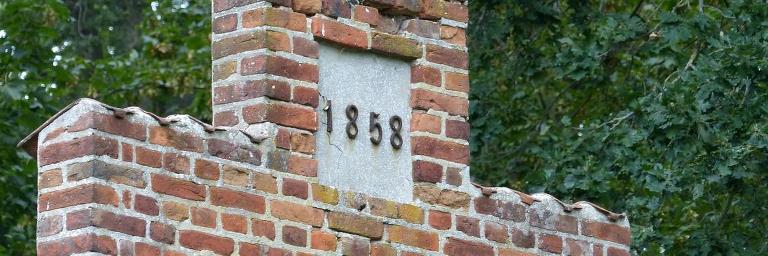Other attractions
Read more here about other interesting sights in the Maribo Lakes area.

The Square
The square was built in the early 1400s. It was located between the monastery and the main road through the town. The large rectangular square was later divided in two because the town hall was placed in the middle. The southern part is called Bagtorvet, and it was here that the town's public water pumps were located until 1907.
On the square with the small fountain is "Lollandspigen" by Victor Kvedéris from 1960. The manor-like town hall was built in 1856 and today houses the local archives. The council chamber on the first floor is still used for council meetings.
Museum Lolland-Falster
The diocesan museum in Maribo contains archaeological finds, rune stones, church inventory, toys and an exhibition about the Polish agricultural workers who came to the area as seasonal workers in the period 1872-1929. The Poles worked in the fields.
The Open Air Museum
At the open-air museum you can see a newly renovated stump mill from Fejø and a school, showing farming culture and building practices from the 19th century. Also of interest is a ploughing locomotive from the earliest sugar beet cultivation.
St Birgitta's Church
Built in 1897 by architect H.C. Glahn for the Polish beet workers. In 1902 the church had three mosaic windows in the chancel, and in 1957 the German ceramist Mirjam Kappel did the ceramic mosaic work above the portal. The church was the first Catholic church east of the Great Belt and outside Copenhagen.
St Birgitta's Monastery
Just a 10-minute walk from the ruins of the medieval Birgitta monastery and abbey church, now the cathedral, the new St Birgitta Monastery "Habitaculum Mariae" has been built at Refshalevej 81 in Maribo. The consecration of the monastery took place on 15 September 2006 at a mass celebrated by Bishop Czeslaw Kozon. The new convent was designed by architect Finn Zeuthen.
Kapellangården
Kapellanstræde 6-12 was the main house of a chapel farm built here in 1761. Today it is an extremely well-preserved and beautiful half-timbered building, now listed, in Maribo's Back Square district.
Lysemose Forest
Within a short distance are three fortifications in the small forest by Nørresø. The largest of the fortifications dates from Grimstrup Castle, which was dismantled when Maribo Monastery was built in the 15th century.
Veteran railway
The Maribo-Bandholm museum railway runs the 8 km stretch through the beautiful countryside to the north coast of Lolland in summer. The railway club that runs the line has a large number of steam and diesel locomotives as well as passenger and freight wagons.
See detailed list on the Museumbanens website.
Skelsnæs Pavilion
Golden Age pavilion from 1822 belonging to Søholt. The pavilion is open to visitors - as an excursion destination and "lunch house". The pavilion was extensively restored in the early 1990s and has recently been repainted and the outer walls plastered and whitewashed in 2013.
Godsted Church
Red-washed, Romanesque, towerless village church. A tombstone of Gotlandic limestone from 1339 is set into the north wall of the chancel.
The mounds
This small forest of Højene, almost 2 hectares, at the southeast corner of Hejrede Lake, contains no less than 40 burial mounds from the Bronze Age. Most of the forest is owned by the state and there is therefore public access to the area, information and a rest area.
Ancient Mounds
Søholt Storskov hides over 40 burial mounds under its canopy, most of them quite small. They are located in groups, and the most beautiful group is located on a ridge at the northernmost point of the forest, on the road to the Skelsnæspavillonen, and consists of 15 burial mounds.
Facilities
From the cathedral, a scenic path leads past the boat harbour and Maribo Kayak Club to Bøndersvig Meadows. On the way you pass the pleasure grounds of Trekanten, a small grove that was donated to the town in the 1800s. Just north of the park is St Birgitta's Monastery.
